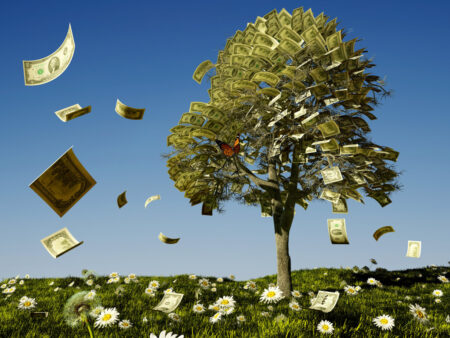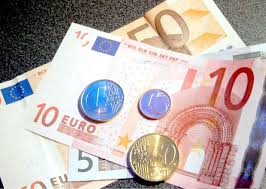In this world where cash represents only a small percentage of the total, we have to consider how many types of Money In The World.Historical evidences show that money has evolved indigenously in response to the economic needs of the people.
16 Types of Money In The World

COMMODITY MONEY:
In the earliest stage of human civilization, different commodities or species were used as money or medium of exchange. The most popular commodities or species were leather, animal skins, salt, wheat and rice etc.
METALLIC MONEY:
Metallic money consists of coins made of gold, silver or nickel. Metallic money varies in weight, fineness and value. All metallic coins are stamped with a die in order to avoid chopping and abrasion against clipping or filing. In our country coins of rupee five, two and one are metallic money.
Metallic money cannot be eliminated from the economy. It is playing its role in one shape or the other. Metallic money is of following kinds:
Full Bodied Money:
It consists of those coins the metallic value of which is equal to Iheir face value. They are also called “standard money or natural money”. These arc made from standard metals like gold and silver according to mint rules and regulations. The gold and silver coins are considered as full-bodied money. Now such money is not used anywhere in the world.
Token Money:
The coins whose face value is higher than their intrinsic value are called token money. They are usually made of sliver, copper or nickel. They are of small denominations and used for small payments. All metallic money, which circulates in present days, is token money.
PAPER MONEY:
Money made of paper is called paper money. It consists of notes issued by the government or its Central Bank. Paper money is also called folding money. It is accepted in payment of goods or services, taxes and all public and private debts. The use of paper money has become very wide due to its many conveniences as a medium of exchange.
Paper money is generally classified under following three heads:
Representative Paper Money:
Representative paper money is that money which is fully backed by equivalent metallic or other reserves. It means the holder of such paper money or currency note can easily get it converted into gold or other metallic money on demand.
Convertible Paper Money:
Paper money which can be converted into gold or metallic money on demand but all the notes issued are not fully backed by gold is called convertible paper money. The state or the public authority which issues
convertible paper currency does not keep an equal value of metallic reserves behind it because she knows that all the notes are not generally presented for conversion at the same time.
Inconvertible Paper Money:
Inconvertible paper money is that form of paper money which is not convertible into gold or silver on demand. It is acceptable because it has been declared legal tender by the issuing authority and has general acceptance as medium of exchange. Generally, inconvertible paper money is termed as “Fiat Money”.
NEAR MONEY:
Numbers of assets, which are liquid in nature but cannot be used directly as a medium of exchange, are considered as near money. For example time deposits, shares, government bonds and securities. Near money can be easily converted into cash without any delay and loss in value.
CREDIT I BANK MONEY:
Bank money occupies a very predominant position as a medium of exchange in,the advanced countries of the world today. Nearly 90% of all transactions take place by cheques. The teiyi bank money applies to that near money, which consists of cheques, bills’of exchanges and drafts.
Cheque:
A cheque is merely an order on a bank by its client to pay specified sum of money to him or to a third party on demand.
Bills of Exchange:
An instrument in writing, containing an unconditional order signed by the maker, directing a certain person to pay a certain sum of money, only to or to the order of a certain person, or to the bearer of the instrument.
Draft:
A draft is a cheque drawn by a bank on its own branch at a different place requesting it to pay on demand a specified amount to the person named in it. It is one of the cheapest methods of sending money both inside or outside the country.
Plastic Money:
Plastic money means the credit cards, debit or smart cards, which have silicon chips and a specially printed set of characters. These cards are used for making payments for the purchase of goods or services locally and internationally.
LEGAL TENDER MONEY:
The money which creditors must accept in settlement of their claims by law is called legal tender money. If we offer such money in discharge of a debt, no one can refuse to take it as government guarantees it. It has following two types:
Limited Tender Money:
It can be accepted only up to a specific limit. It Pakistan, coins of small denomination value up to Rs. 1, 2 and 5 are limited legal tender money because coins are token money which are used in small payments.
Unlimited Tender Money:
These can be paid upto any amount to the creditors for the settlement of claims or dues. Notes of Rs. 10, Rs. 20, Rs. 50, Rs. 100, Rs. 500, Rs. 1000 and Rs. 5000 are unlimited legal tender in Pakistan.
MONEY OF ACCOUNT
It means the unit of money by which the value of goods or services is expressed? Money of account in P^kistan is rupee because all people count IhelrTnoney in rupees. In be same way, price of all goods or services is also expressed ifrrupees. Every country has its own money of account. For example, England has Pound, Germany has Mark, America has Dollar and Saudi Arabia has Rial_eKL_
